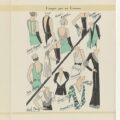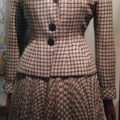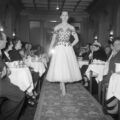Cristobal Balenciaga – Designer
October 24, 2016Cristobal Balenciaga – such a revered name in fashion, and such a mysterious man. Balenciaga the house rarely advertised, did not show its new collections at the same time as the rest of Paris, and made clothes that women of every age could feel elegant in.
Cristóbal Balenciaga, the man, only gave one interview in his lifetime, was said to be a hard task master and perfectionist who rarely cracked a smile, and a devout Catholic. He was also one of the most expensive couturiers in Paris.
Cristobal Balenciaga
The French fashion house of Balenciaga was founded by Cristobal Balenciaga, a Spaniard from the Basque region of Spain. Christian Dior held him in such high esteem he referred to him as “the master of us all,” for Dior to utter those words, we can rightly assume that Balenciaga was a genius in the fashion world.
His feminine, modern styles have been successful all over the world and although the handsome Spaniard died in 1972, he left his legacy of haute couture behind and is still going strong. The house of Balenciaga is now owned by the French company, Kering. Its creative director is Alexander Wang.
The beginning
Balenciaga would open his first boutique in 1918 in his home country and would go on to have branches in both Barcelona and Madrid. Royalty as well as other influential characters would wear his designs.
Balenciaga left Spain and moved to Paris following the break out of the Spanish Civil War, and would be just as successful here in France as he had been in Spain.Although highly dangerous, customers would travel from all over the world during the outbreak of World War II to wear his gorgeous costumes.
Post war success
Balenciaga went on to be even more successful following the war – matching a woman’s body to the clothes perfectly.
He was the first to come up with the chemise dress, which had been formerly known as the tunic. After that, in the fifties, came the balloon jacket and skirt, high-waisted dresses, the sack dress, cocoon coat and the empire line. The empire line consisted of kimono shaped coats and the high-waisted dresses. He felt he had created a brand new silhouette for women – and he had.
Proteges, royalty and politicians wives
He would experiment with fabrics throughout the sixties creating beautiful shapes using a variety of different fabrics that never failed to surprise and engage his audience. His clothes were born by both Queen Fabiola of Belgium (wedding dress) and Jackie Kennedy. His proteges included Osca de la Renta and Givenchy.
Cristobal Balenciaga and the press
The press routinely referred to him as “shy” but I think he was just focussed on making frocks – after all, each collection consisted of 200-250 items, and the man conceived and cut each one himself, sometimes designing the fabric it was to be made in conjunction with textile manufacturers, and then choosing which one of his house models, (whom he had personally picked for her poise and elegance) it would suit best in terms of her colouring and then fitting it to her himself.
As the seamstresses made up the garment they had to check progress with him four times during the making-up, and he often ripped apart work that didn’t meet his standards.
When the item of clothing was finally finished he chose the hats and accessories (also made in-house) which it would be worn with. However, he couldn’t control much beyond that, as although the press consented to come to his shows, held, along with Hubert de Givenchy’s a full month after the rest of Paris, and gave them far more column inches than other designers because of it, when Balenciaga tried to insist on them photographing his clothes on his in-house models they often refused, as these women had been picked for their ideal (to Balenciaga) bodies and attitudes, never mind their faces which magazine editors sometimes found to be not very photogenic. If the house models were used, they often appeared in the magazines with their heads cut off!
Cristobal Balenciaga – Early Life
Cristóbal Balenciaga was born in the fishing town of Getaria, Spain, in 1895. His father was a fisherman and his mother a seamstress. After she died, her sewing machine was treasured by her son. Balenciaga was apprenticed in tailoring at one of the many tailors in his home town. He set up as a successful couturier in 1919, eventually expanding to three Spanish branches, in Barcelona, San Sebastián and Madrid. After they closed because of the Spanish civil war, he moved to London but didn’t stay there for long, moving to Paris soon afterwards in 1937 where his business was a success. Eventually he was able to build his business back up and re-open in the three Spanish locations.
Cristobal Balenciaga – The Spanish Designer
Cristobal Balenciaga could speak both English and French very well but his core staff were Spanish, and they often conferred together in their native tongue. He was also highly influenced by the colours and shapes of both traditional Spanish clothing (for both men and women) and Catholic Spanish religious garments and paintings, and all of this meant that he was often referred to as “the Spanish designer Balenciaga” as opposed to other designers of differing nationalities in Paris, who weren’t known by their country of birth. His Spanish-ness was referred to with admiration though – it wasn’t an insult at all. The press around that time conjured up first a sophisticated Spain, the Spain of high-class resorts San Sebastián and Biarritz, and then a passionate and colourful Spain, one of bullfights and holy parades in the streets.
Influenced by Spanish motifs
Cristobal Balenciaga was a bit of both. He dressed the rich people, the noblewomen who would stroll along the Spanish Riviera, but some of his clothes were directly influenced by the matador’s Suit of Lights, as the heavily embroidered bolero and tight trousers were called, as well as the flounces of flamenco dresses and the rich overlays of handmade lace traditionally worn by aristocratic Spanish women.
Traditional dress
Traditional dress in the Santander region of Spain consisted of a long striped apron over a matching skirt, with the stripes being formed of alternating strips of velvet and cotton – this he lifted wholesale. And his interest in swagging, bunching and pouffing vast swathes of silk may well have come from the saints depicted in religious paintings found inside churches, such as Francisco de Zurbaran’s St Casida of 1640, who is shown with a length of lustrous fabric swinging from her shoulders and two silk skirts layed over each other. His favoured colours – hot pinks and violent purples – recall the colours of the church and most interestingly, the almost abstract simplicity of Cristobal Balenciaga ’s later designs echo the shapes of ecclesiastical garments – bishop’s copes and surplices, which as a young tailoring apprentice in a highly religious town he would have been taught to make next to men’s secular clothes.
Cristobal Balenciaga – Fantastical Evening wear
Cristobal Balenciaga ’s clothes can seem as if they were designed by two or even three different people, with different likes and agendas. His evening wear, especially at the start of his career, particular Spanish influences notwithstanding, were as conventionally constricting and painfully impractical as anything by his contemporary, Dior. Strapless, boned, hourglass shapes were embroidered with feathers, glass beads and highly crushable bouquets of ribbon flowers, so the wearer could not have bent down because of the boning, nor sat down because of the risk of having a highly visible flat patch of broken decoration over her bottom.
Practical Daywear
His daywear, however, was far more airy and forgiving. Neat skirt suits with a characteristic boxy line ignored the hourglass silhouette, and the bracelet length sleeves which appeared on most of his designs were designed to be practical. However, fascinating photos of Cristobal Balenciaga and a model at the fitting stage show quite clearly that the house model was wearing a very sturdy bra and big knickers. The body was not meant to breathe too much.
Some of his house models complained that Balenciaga ignored a woman’s curves, and thought of them as an abstract cube. But this mode of dressing suited some women very well. Ironically perhaps, it was the very slender, breastless and hipless girls with long coltish legs who looked best in his work, or older women who had maybe grown a little wider around the waist. “Mr Balenciaga likes a bit of a tummy” averred one of his workshop heads. This was great, as the coltish young girls might have been modelling his styles, but it was the older, rich women who were paying for them.
Cristobal Balenciaga – Purely Couture
One of his most famous clients was Mona Bismark, who bought just about her whole wardrobe from the couturier. Not only ball gowns and skirt suits, but gardening shorts and casual shirts – and it should be remembered that Balenciaga did not make ready to wear. Another surviving order from Barbara Hutton, the Woolworth’s heiress shows that in one season, she bought from the house nineteen dresses, six suits, three coats and one deshabille, plus a special order of a fancy dress outfit as Mozart, of heavily encrusted dark blue velvet with a tricorne hat and matching accessories, for which she was rumoured to have paid about £5,500 – in today’s money that’s about £104,000.
That was just a rumour, but Cristobal Balenciaga ’s prices were definitely on the high side, even for couture that was individually made for each client.
A long-lasting investment
However, at least his designs had the advantage of being wearable season after season, and even year after year. Whereas his contemporary Dior liked to surprise the world with a distinctly new collection in a new shape and direction every season, Cristobal Balenciaga ’s work just gradually evolved. Each design was identifiable by a number only and the collections were known by the date, not by a pretty name as Dior’s were. This meant that, especially as the garments were so well made, women could continue in wearing them without looking out of date.
Cristobal Balenciaga – An inventor of textiles
Couturiers need to have a close relationship with not just their own workrooms but also outside suppliers like their fabric manufacturers. Balenciaga worked with around 488 suppliers and with some he developed new fabrics to suit his designs, worlds away form the traditional high quality silk or natural fibres you would expect from a luxury couture item. There are examples of ballgowns in garish man-made fibres, which were clearly chosen because the stiffness of the fibre held the structure of the garment well.
Balenciaga developed the fabrics gazar and supergazar with Swiss textile firm Alexander. They are methods of weaving silk or wool to give it an almost sculptable hold, and are still used a lot today for wedding gowns. He also chose some unusual ready-made fabrics from houses, such as a tweed made in Scotland from velvet and mohair, much lighter than the usual tweeds of the day, or a giant tufted mohair that looked more like a rug than anything easily made into clothes, for which he designed a very simple coat. The manufacturers commented that Balenciaga always knew exactly how much fabric to order from them for each garment – he did not round-up the amount to a whole yard but only ordered as many inches as he needed. There was no waste and he never had to ask for extra due to miscalculation.
An innovator of warmth
Cristobal Balenciaga ’s practicality continued in that he was one of the first designers to show knee-length boots and woolly tights to go with the shortening skirts of the 1960s. He also licensed the tights, and in 1952 began the licensing of a range of very popular perfumes.
Cristobal Balenciaga – Designing for Air France
His attraction to man-made fabrics continued in 1968 when, close to retiring, he was commissioned to make the air hostess uniform for Air France. Cristobal Balenciaga was by then the Grande Dame of French couture, but he had never made clothes for the mass market and never undertaken a commission like this before. He designed a two-piece summer suit in either pale blue or pale pink polyester, with a fitted knee-length skirt with pockets and a short-sleeved blouse, worn with a small ribbon tie fitting neatly under the collar. A navy blue cap, worn tilted forward, white cotton gloves, five-inch heeled court shoes and a navy blue handbag completed the outfit.
The winter suit
The winter suit included a navy blue wool serge suit with a collarless jacket, a wool version of the summer skirt, and similar polyester blouse in white, with long sleeves this time. This came with a boxy blue overcoat, optional knee-high boots, and a printed silk scarf which could be worn around the neck or used to tie the cap on in bad weather. Air France pronounced themselves well pleased; the stewardesses themselves were reportedly unhappy. The polyester, though crease resistant and easily laundered was sweaty and uncomfortable in the heat; and Cristobal Balenciaga ’s classic square shape was beginning to look like something more suitable for well dressed, conservative old ladies than go-getting young air hostesses. Why, the press wondered, didn’t Air France turn to a younger, more up and coming designer? Someone like Emanuel Ungaro or André Courrèges?
Emanuel Ungaro and André Courrèges were indeed the latest up and coming designers in 1968, and if their names sprang so readily to mind in connection with Cristobal Balenciaga it was because they had been trained in his studio. Both designers readily acknowledged their debt to him.
The end and future of the brand
Balenciaga closed his fashion house in 1968, he died on the 23 March, 1972 and the house was revived, reopening in 1986 and nowadays is the property of luxury conglomerate Kering. For fifteen years, Nicolas Ghesquière lead the design of the house to wildly successful acclaim, an appointment which ended acrimoniously in a highly publicised lawsuit. He was followed by Alexander Wang for another three years, and today, as of October 2016, Demna Gvasalia is Balenciaga’s new creative director.
Balenciaga and Alexander Wang
Alexander Wang was already a successful designer before joining Balenciaga. He launched his own label in 2005, and in 2007 would go on to launch his own ready to wear collection for women, which was extraordinarily successful.
In 2012 Wang was named Creative Director of Balenciaga following the departure of Nicolas Ghesquiere. He would oversee both the men’s and women’s ready to wear collections and the accessory lines. In the following year in early Spring 2013, Wang debuted his first collection for Balenciaga in Paris.
Wang has also gone on to design for H&M as other great designers have before him, his collection came on to the market in November 2014.
H&M
The H&M collection is strong, with thick fabric, greys, charcoal,black and coloured piping, it’s an androgynous look, with dresses that fit the body like a glove, with clothes that have an almost amphibious and sporty look, both masculine and strong.
If you’re an Alexander Wang fan then one can only assume you’ll be heading down to H&M very soon….




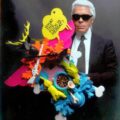
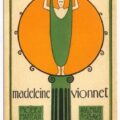
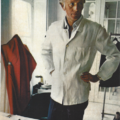
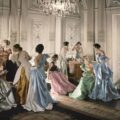
![Azzedine Alaïalogo. By alaia.fr (alaia.fr) [Public domain], via Wikimedia Commons](https://www.blue17.co.uk/wp-content/uploads/2017/11/Azzedine_Alaïa__Alaia__corporate_logo-120x120.png)


